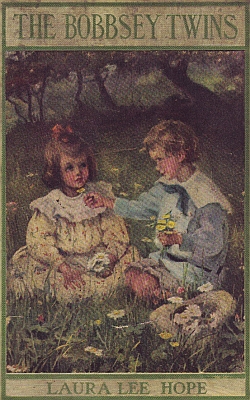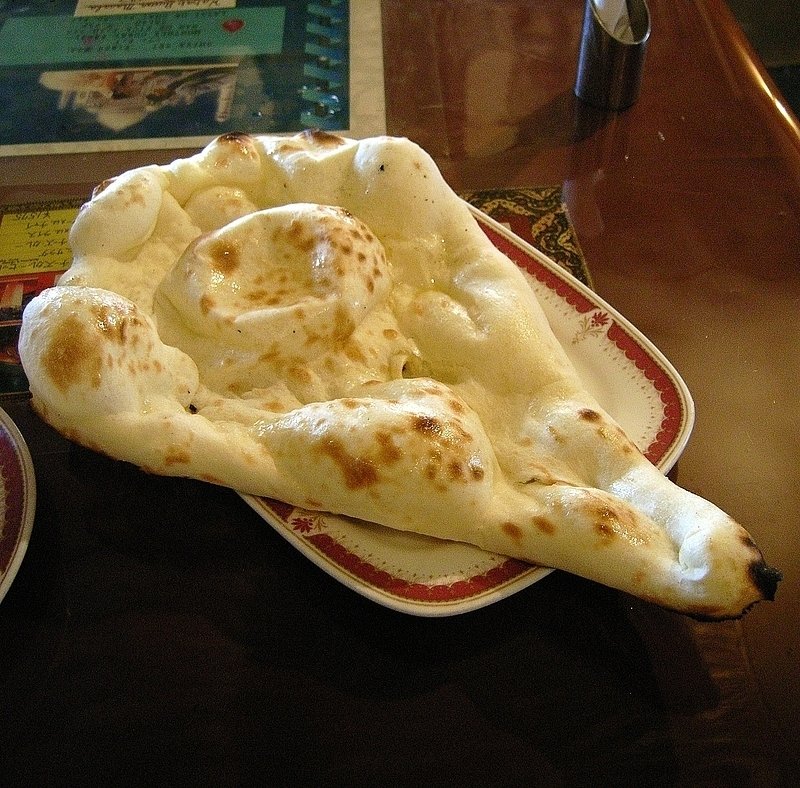NAN (nan)
1.
One of the Bobbsey twins
2. A leavened, oven-baked flat bread
of India
Common clues: A Bobbsey twin; Bert Bobbsey's twin;
Indian bread; Tandoori bread; One of the Bobbseys; Palindromic
fictional twin; Indian flat bread
Crossword
puzzle frequency:
5 times a year
Frequency
in English language:
11082 / 86800
Video: The
Bobbsey Twins at School
The Bobbsey Twins are the principal characters of what was, for many years, the Stratemeyer Syndicate's longest-running series of children's novels, penned under the pseudonym Laura Lee Hope. The first of 72 books were published in 1904, the last in 1979, with a separate series of 30 books published from 1987 through 1992. The books related the adventures of the children of the upper-middle-class Bobbsey family, which included two sets of fraternal twins: Nan and Bert, who were 12 years old, and Flossie and Freddie, who were six.

Edward Stratemeyer himself is believed to have written the first volume in its original form in 1904. When the original series was brought to its conclusion in 1979, it had reached a total of 72 volumes. At least two attempts to restart the series were launched after this, but neither effort saw the popularity that the original series achieved.
Speculation that Stratemeyer also wrote the second and third volumes of the series is believed to be incorrect; these books are now attributed to Lilian Garis, wife of Howard Garis, who is credited with volumes 4–28 and 41. Elizabeth Ward is credited with volumes 29–35, while Harriet Stratemeyer Adams is credited with 36–38, 39 (with Camilla McClave), 40, 42, 43 (with Andrew Svenson), and 44–48. Volumes 49–52 are attributed to Andrew Svenson, while 53–59, and the 1960s rewrites of 1–4, 7, 11–13, and 17, are attributed to June Dunn. Grace Grote is regarded as the real author of 60–67 and the rewrites of 14 and 18–20, and Nancy Axelrad is credited with 68–72. Of the 1960s rewrites not already mentioned, volumes 5 and 16 are credited to Mary Donahoe, 6 and 25 to Patricia Doll, 8–10 and 15 to Bonnibel Weston, and 24 to Margery Howard.
***
Naan, nan or khamiri is a leavened, oven-baked flatbread found in the cuisines of West, Central and South Asia.

The earliest appearance of "naan" in English is from 1810, in a travelogue of William Tooke. The Persian word nān 'bread' (Uzbek non/нон) is already attested in Middle-Persian/Pahlavi as n'n 'bread, food'. The form itself is of Iranian origin; cognate forms include Parthian ngn, Balochi nagan, Sogdian nγn-, Pashto nəγan 'bread'.
The form naan has a widespread distribution, having been borrowed in a range of languages spoken in central and south Asia, where it usually refers to a kind of flatbread. The spelling naan is first attested in 1979, and has since become the normal English spelling.
Other than etymology, the "naan" as is synonymous today originates from South Asia with influence from the Middle-East. The most familiar and readily available varieties of naan in Western countries are the South Asian varieties. In Iran, from which the word ultimately originated, nān (نان) does not carry any special significance, as it is merely the generic word for any kind of bread, as well as in other West Asian nations or ethnic groups in the region, such as amongst Kurds, Turks, Azerbaijanis (from both Azerbaijan and Iran), etc. Naan in parts of South Asia usually refers to a specific kind of thick flatbread (another well-known kind of flatbread is chapati). Generally, it resembles pita and, like pita bread, is usually leavened with yeast or with bread starter (leavened naan dough left over from a previous batch); unleavened dough (similar to that used for roti) is also used. Naan is cooked in a tandoor, from which tandoori cooking takes its name. This distinguishes it from roti, which is usually cooked on a flat or slightly concave iron griddle called a tava. Modern recipes sometimes substitute baking powder for the yeast. Milk or yogurt may also be used to impart distinct tastes to the naan. Milk used instead of water will, as it does for ordinary bread, yield a softer dough. Also, when bread starter (which contains both yeast and lactobacilli) is used, the milk may undergo modest lactic fermentation.
This article is licensed under the GNU Free Documentation License. It uses material from the Wikipedia article "Bobbsey_Twins" and “Nan”.
|
|